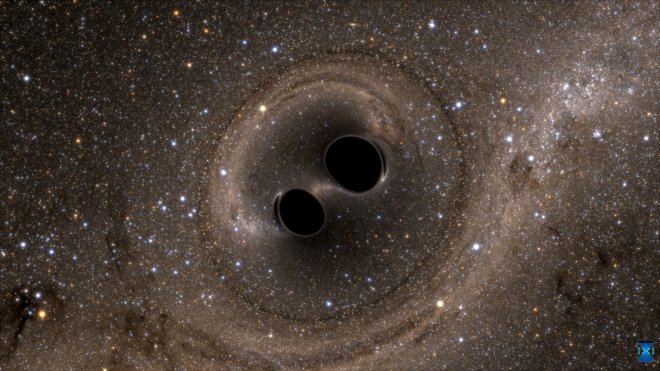
China will set up the world's highest altitude gravitational wave telescopes in a Tibet prefecture close to Line of Actual Control with India, a plan that was proposed almost 100 years ago by Albert Einstein, based on his theory of general relativity.
The project, which has a budget of $18.8 million, will detect and gather precise data on primordial gravitational waves in the Northern Hemisphere which may reveal more about the Big Bang theory. The telescope will be located 5,250 meters above sea level in Tibet and is expected to be operational by 2021.
In February 2016, scientists from the Laser Interferometer Gravitational-Wave Observatory (LIGO) proved the existence of gravitational waves. According to LIGO, the "Gravitational waves are 'ripples' in the fabric of space-time caused by some of the most violent and energetic processes in the universe. ... The strongest gravitational waves are produced by catastrophic events such as colliding black holes, the collapse of stellar cores (supernovae), coalescing neutron stars or white dwarf stars, the slightly wobbly rotation of neutron stars that are not perfect spheres, and the remnants of gravitational radiation created by the birth of the universe itself."
Reports show that gravitational waves are completely different from electromagnetic radiation that is commonplace in the universe. It interacts very weakly with matter even as they travel through space at the speed of light.
The region where the telescope will be placed has clear skies and minimal human activity, and hence it's an ideal place for observing faint echoes from the earliest days of the universe.
Xinhua, the official state media, quoted Yao Yongqiang, chief researcher with the National Astronomical Observatories of the Chinese Academy of Sciences, saying that the first telescope, code-named, Ngari No. 1, is already under construction while the second phase of construction, called Ngari No. 2, involving a series of telescopes will be located about 6,000 meters above sea level.
There is no exact time frame yet for the completion of the second phase, but the cost of building the two-phase observatory is estimated to be 130 million yuan (about $18.8 million).
Reports said that the project was initiated by the Institute of High Energy Physics, National Astronomical Observatories, and Shanghai Institute of Microsystem and Information Technology, among others.
In September 2016, China started operating the world's largest radio telescope in a mountainous region of southwest China's Guizhou Province. The telescope studies the distribution of neutral hydrogen and seeks to unlock answers on the evolution of the universe. It will also compile huge amounts of data on physical phenomena in space, such as pulsars and black holes.









